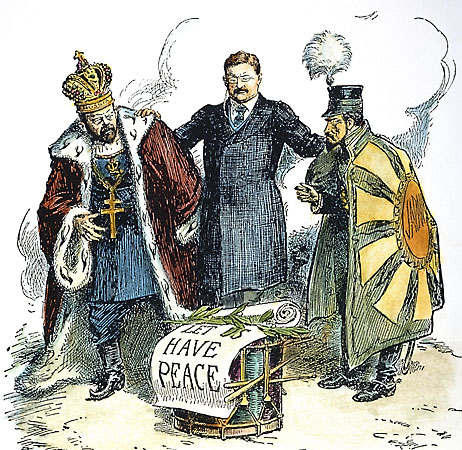
Japan and Russia, neighbors who rank as two of the great powers of Northeast Asia, have for more than a century vied with each other for influence in Korea and China. For the past half-century, Tokyo and Moscow have also faced each other on the global stage, at times seeking leverage from their bilateral relations but more often opposing each other as part of Cold War alliances. Even today they have not “normalized” relations. Mired in a dispute over four islands known in Russia as the Southern Kuriles and in Japan as the Northern Territories, they managed to reestablish diplomatic relations in 1956 but not to sign a peace treaty or to agree on boundaries. Although they have been negotiating about both territory and large-scale economic cooperation, nationalistic attitudes in both countries have long prevented a deal.
Japanese-Russian Contacts before the 1850s
Japan and Russia first came into contact in the seventeenth century. After Russia’s historic march through Siberia to the Pacific Ocean was diverted northward by China through the Treaty of Nerchinsk in 1689, Russian military colonizers sought provisions in Japan as a means to secure their presence in the East. Earlier in the century, however, Japan had decided to seclude itself from most foreign contacts, especially from the maritime West European powers jockeying for influence. Through the first half of the nineteenth century, Russia sought ways to pry open Japan, while Japanese through their window in Nagasaki (the one Japanese port open to certain foreign countries) heard rumors about the danger of a growing Russian presence in the North. Despite occasional contacts through shipwrecked Japanese fishermen and aggressive Russian naval vessels, a breakthrough came only after the U. S. navy opened Japan in 1853.
Nineteenth-and Early-Twentieth-Century Relations
In the 1860s, both countries began far-reaching reforms after experiencing crushing military humiliations and awakening to national weakness. In the 1890s, they continued along parallel tracks, becoming leaders in rapid modernization. Both strengthened centralization and added nationalist assertiveness to their foreign-policy agendas. With Russia’s construction of the Trans-Siberian railroad and Japan’s defeat of China in the 1894-1895 Sino-Japanese War, the two countries confronted each other directly. The Russo-Japanese War of 1904-1905 fueled the two most powerful currents in Northeast Asia during the first half of the twentieth century: the rise of revolution in Russia after the country’s defeat in World War I and the advance of colonialism in victorious Japan.
After the 1917 Bolshevik Revolution and the 1919 Japanese expeditionary force to the Russian Far East, a brief interlude of the friendly relations that had existed before World War I was impossible to revive. Eager to learn from European civilization, many Japanese were nevertheless drawn to Russia through its literary classics, while the two states found a common purpose in adjacent spheres of influence in Korea and northeast China. In Japan, a newly emerging intellectual stratum gravitated toward socialism, to the growing dismay of the Japanese government.
During Russia’s civil war, Japan joined other countries in sending garrisons into Russia, which were later withdrawn once the Communists were firmly in charge. Indeed, until the Soviet Union blocked militarist Japan in two battles in 1938 and 1939, it appeared likely that Japan would turn northward from its invasion of China rather than shift toward Southeast Asia in its search for oil and a secure Asian hinterland from which to contend for global dominance.